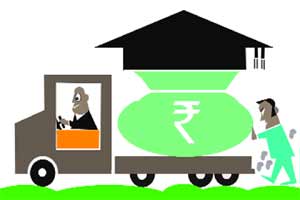The entire nation’s eyes are set on the upcoming Budget for four major reasons. One, despite the fading euphoria of Narendra Modi’s landslide Lok Sabha election victory, he has somehow managed to keep excitement ticking and people still nurture high hopes from this Budget. Two, after the monetary policy failed to deliver in terms of taming inflation and actually helped usher in recession, the onus of correcting these major macroeconomic evils has fallen on fiscal policy, manifested in the upcoming Budget. Three, the first two years after elections is the only time to undertake difficult reforms that may displease people in the short run but bear fruit before next elections. So it’s ‘now or never’ for this Budget and the nation is anxious to know if Modi’s team will grab this opportunity or miss it. Four, whether India’s large young population will turn into a dividend or a curse will depend on how this Budget treats the education sector as India stands at the cusp of inclusive prosperity or structural gloom.
Govt initiatives
The new government has taken various initiatives such as Jan-Dhan Yojana for financial inclusion; 100 smart cities for better industrial dispersal; mandatory CSR spend by big profit-making companies; fast-tracking single-window clearances to major projects; steps towards removal of bureaucratic logjam, red-tapism and wide-spread corruption; involving states in NITI Aayog for cooperative federalism; asking each MP to adapt a village; shrewd foreign policy etc. These will bear fruit in due course depending upon the bureaucratic strength of implementation. But as far as education and skill development is concerned, through the 100 Kaushal (Knowledge Acquisition & Up-gradation of Skilled Human Abilities & Livelihood) centres to be set up across the country, UGC will offer diplomas, bachelor’s and master’s courses in vocation as well as PhD through selected institutions with an assistance of R5 crore. This is a welcome initiative for higher education and skill development. At the next level, these measures can be woven together and the specifics must be visible in this Budget.
Education
The HRD ministry has decided to build many more IITs and IIMs, probably believing the ‘trickle-down’ theory. Unfortunately, this theory does not have universal applicability. (For example, if Ambanis become richer through rising profits of Reliance, then they will invest more, employ more, pay more and their class-4 employees could be using smartphones and washing machines. This is trickle-down.) But producing more IIT/IIM graduates—most of whom aspire to go abroad and, according to some figures, 20% actually leave this country—doesn’t automatically ensure quality school education for the rural and urban poor. For instance, the above-mentioned Kaushal and similar government schemes will produce manpower of a much superior quality if the students opting for these courses get a good grounding at the school-level—right from KG to 10th and 12th. Better raw material will always produce better finished good with less effort. So this theory—let’s call it the ‘trickle-up’ theory—could work alongside the trickle-down effect. This ‘trickle-up’ we are talking about goes beyond “making profits at the bottom of the pyramid.” It elevates the underprivileged to such an extent that, going forward, they can have the ability to create more wealth for the rich, which will then trickle down ‘spirally’.
Trickle-up in education
In education, the ‘trickle-up’ theory will work and not ‘trickle-down’. Good quality basic education will create an army of youngsters ready to receive higher education and then contribute to nation-building. It’s a myth that Indian labour is cheap. Although Indian workers take lower salaries than some of their foreign counterparts, their productivity is even lower. High quality primary to post-graduate education alone can produce a highly productive workforce, enabling industry to deploy high technology and produce better goods and services. When all deprived children get access to basic and higher education and skill-sets, companies will become more profitable and the rich will become richer. This is ‘trickle-up’ in education.
Budget 2015-16
We wish to see a relatively bigger budgetary allocation to school, college and vocational education. Dedicated funds can be utilised for the following:
* Repairing the existing government school and college buildings.
* Building new schools and colleges across country, especially in remote rural areas.
* Giving housing facilities and higher salaries to teachers to raise their ‘relative status’ in society.
* Thereafter, attracting and training the best of the educated youth towards the teaching profession, especially in government schools/colleges.
In fact, Modi can use all his charm to appeal to the bright youth to take up school teaching as career. If this doesn’t happen, we will see the unskilled, uneducated, untrained youth taking to streets in frustration and the crime rate further going up, needing more policing spend. To avoid this, the HRD ministry should be led or advised by experienced, seasoned educationists with creative intelligence. If the Budget can’t provide, a special purpose vehicle can utilise some of our $300 billion forex reserves for the purpose.
PPPP
The new public-private-people partnership (PPPP) model is an improvised version of the voluntary camps or Baba Amte’s ‘shramadaan shibirs’ of the yesteryears, wherein the elite participated to build small dams and canals. We are sure India can respond to such appeals by our respected leaders and help build schools for the poor and even teach, so as to develop today’s children to take on tomorrow’s developed India.
This Budget can show the way.
By Shubhada Sabade & Pushpanjali Mitra
Shubhada Sabade is faculty of economics and head, SIMS Economic Think Tank (Simsett). Pushpanjali Mitra is an MBA student and member, Simsett
